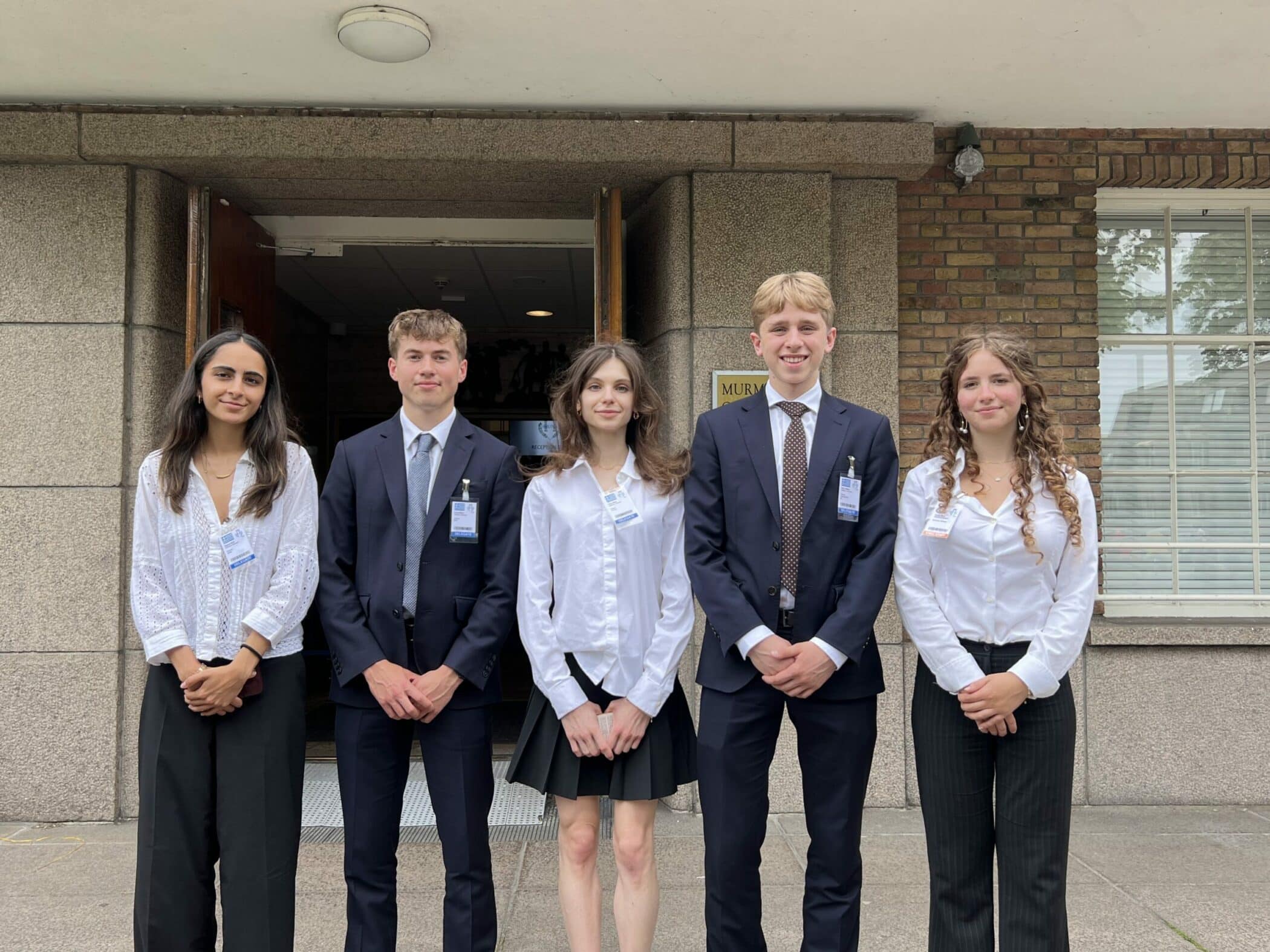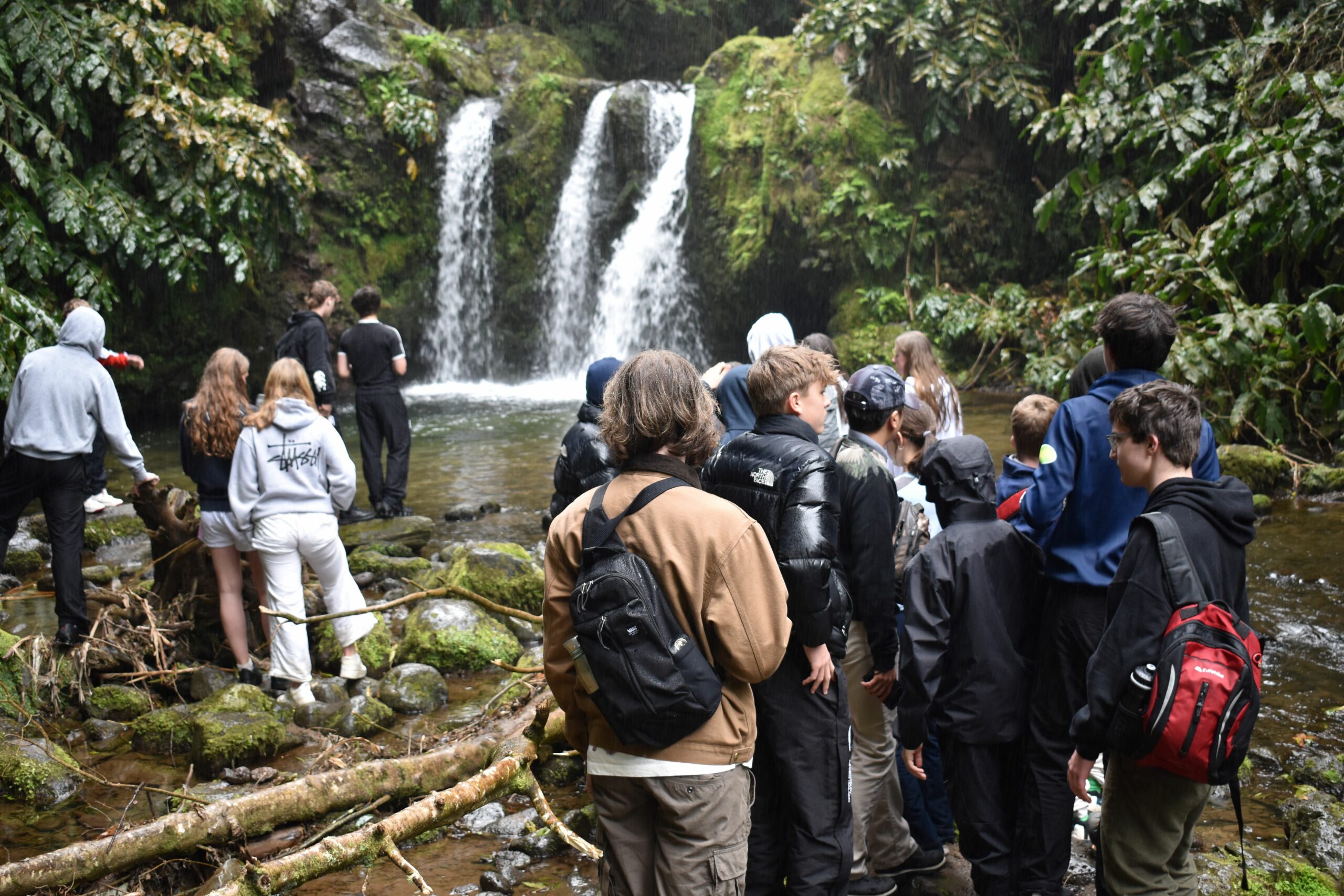Form 3 pupils are all set for their trip to the WW1 battlefields, which has been reinstated this year after a two-year break due to Covid-19. Focusing on the Battle of the Somme, the trip involves a walk through preserved trenches at Beaumont-Hamel, visits to the extraordinary memorials at Thiepval and Vimy Ridge, and a brief service of remembrance for Jack Dewar, an Old Oakhamian buried in one of the area’s many beautiful war cemeteries. The strengths and weaknesses of British military strategy are also discussed from the commanding heights of the Newfoundland Memorial. The visiting pupils have been divided into two groups. Below are updates from the groups:
Battlefields Group 2 Day Three
For our first stop of the final day, we started at the Neuville-St-Vaast German Military cemetery, F3 walked around in their groups observing the differences between the French and British Cemeteries they had previously been to. The cemetery is the largest burial place in France and was opened in 1983.
Our final stop on our Battlefields trip was to Vimy Ridge Memorial and preserved trenches. Mr Roberts spoke about the attack on Vimy Ridge, the lessons learnt from The Battle of the Somme, the important role Canada played and Major Malcolm Neilson who attended Oakham from 1908-1912, who lived in Canada when the war broke out. F3 walked around the preserved mine craters and in the restored trenches where Canadian, British and German soldiers would have been for the attack on Vimy Ridge in 1917.
There was then a short drive to The Canadian National Vimy Memorial, an impressive Memorial that looks out on to Arras and the battleground. It commemorates the 3,598 Canadians that died during the battle.
It was then time to head back to Oakham. It has been a wonderful and insightful trip with all the pupils engaging, learning about the sacrifices, while also remembering those that fell. It was an incredibly enjoyable trip – even with the heat.
Battlefields Group 2 Day Two
We started the day with an introduction to the Battle of the Somme at the Lochnagar Crater. British soldiers created the largest man-made explosion (before the Atomic Bomb), which could be felt from the sky.
We then headed to the Devonshire Cemetery to remember the Devonshire Regiment who died for their country. This cemetery is unique as it is the site of the trench where the men of this regiment fought. The inscription on the cemetery reads “The Devonshires held this trench, The Devonshires hold it still”.
Thiepval is a stunning memorial dedicated to the Missing of the Somme. There are 73,357 names listed on the tablets which cover the memorial. Six Old Oakhamians are named on the memorial: G.H.E Vidler, J.N Pickering-Clarke, B.V. Wood, A.C. English, W.H.L Dewhirst and J.P. Bromhead.
Our next stop was to one of the most beautiful cemeteries of the Somme, the Ancre British Cemetery. Here lies Old Oakhamian Jack Dewar who left Oakham in December 1915 and enlisted in the army as soon as possible. Jack fought bravely before being killed on 13 November 1916. We held a service to honour Jack and the 70 other Oakhamians who gave their lives in the service of their country. Rachel Davenport did a reading, with Bea Cole and Lloyd Blackman laying a wreath in memory.
We had a lovely French lunch of baguettes before spending the afternoon in Newfoundland Memorial Park, dedicated to the Newfoundland Regiment’s bravery. In two groups Mr Roberts and Dr Sheppard led us around where we saw preserved British and German trenches, left as they were from the war. Pupils also walked along the British front line, through what was no man’s land to the German front line, trying to gain an understanding of what it would have been like for the soldiers on the battlefield.
For the last stop of the day, we travelled to Sunken Lane where almost 600 Lancashire Fusiliers were stunned by the Hawthorn Ridge mine explosion. We walked where the Fusiliers would have walked on to the front. We then walked into the Hawthorn Ridge Mine where we could stand at the bottom of the crater created by British explosives.
The evening consisted of a Burger Night and Quiz, with some Battlefields-themed questions, and a bit of friendly competition once again. It was a very close contest between the groups with some deceiving techniques thrown in. It was a beautiful day, with all F3 being engaged with what Mr Roberts and Dr Sheppard were saying while also handling the heat.
Battlefields Group 2 Day One
There was a lot of excitement, however, tiredness due to a 4am start did take over with most of the pupils sleeping on the way to the Channel Tunnel.
Once we arrived in France we began to watch My Boy Jack to help set the Battlefields scene. This movie shows the unbearable pain of loss experienced by families throughout England. It is a true story of how Rudyard Kipling pulled strings to get his 18-year-old son, Jack, into the War. Jack sadly died at the Battle of Loos. It is also significant as our first stop of the tour was the Dud Corner Cemetery and the Loos Memorial where Jack Kipling’s name is inscribed on the Memorial.
There are also five Oakhamians remembered at the Loos Memorial who were all killed in a single day: E.C Franks, W.I Johnson, E.G. Langdale, B.F.W Mogridge and G. Sanderson. Mr Roberts spoke to the group about the Oakhamians and the sacrifices they made before Oliver Williamson laid a wreath in remembrance.
Our next stop of the day was Notre-Dame-de-Lorette, the largest French military cemetery that also demonstrates the sheer scale of loss with the ‘Ring of Memory’. This memorial site has the names of all soldiers that fell in the region, no matter what their nationality. Pupils searched for their own surnames to see whether they could find any relatives.
After some rest and relaxation in the hotel, we then headed out for a meal in Lens, followed by some friendly but very competitive bowling!
Battlefields Group 1 Day Two
We started the day by visiting the dramatic site of the Lochnagar Mine Crater. The site of the largest man-made explosion before the Atomic Bomb, Lochnagar marks a significant site along the Western Front around La Boisselle.
The group then travelled to the spectacular memorial of Thiepval. Serving as both a memorial of the Battle of the Somme, as well as a memorial to those who fell, Thiepval towers over the surrounding valley, demonstrating its strategic significance in the war itself. The site is also the location of a joint Anglo-French cemetery; sitting behind the monument structure, it is a reminder of the ‘eternal comradeship’ in which those who fought together will always be bound.
Following on from this, the group made its way to the Ancre British Cemetery. This cemetery holds significance in not only remembering the fallen in the Somme but as also being the resting place of Old Oakhamian Jack Dewar. A Second-Lieutenant in the Royal Naval Division, Jack Dewar was killed on 13 November 1916. Mr Denman led a service in honour of Dewar, and pupils laid a wreath to mark the School’s remembrance.
We then moved to a cemetery that remembers the efforts of the Devonshire Regiment, buried in the trench from which they left to attack. Uniquely all but two of the graves are members of the Devonshire Regiment, as a result, upon entry to the cemetery an inscription reads “The Devonshires held this trench, The Devonshires hold it still”.
Following a stop for lunch, Mr Roberts and Dr Sheppard led two groups around the Newfoundland Memorial Park; a place commemorating the Newfoundland Regiment’s bravery, in which 85% of the regiment’s men fell in battle. The battlefield lies preserved as it would have been from the battle, with a giant Caribou statue to pay memorial.
To end the day, both groups arrived together at Hawthorn Ridge, where the whole group walked up the sunken lane, in the very footsteps of the Lancashire Fusiliers who went over the top at the battle. From there the group scaled the hill and were able to observe another giant crater from a British mine and then onto a beautifully kept British cemetery atop the Ridge surrounded by French countryside.
Overall, a very full-on day that truly demonstrated the great loss of The Battle of the Somme, but also demonstrated the individual stories which unravelled across the front.
Battlefields Group 1 Day One
The first Battlefields trip departed Schanschieffs at 5:30am with some bleary eyes, but plenty of anticipation!
We arrived at Loos at 13:30 and our first stop was Dud Corner Cemetery, a memorial which honours 1,800 burials in the cemetery and a further 20,000 missing soldiers from the battlefield. Mr Roberts can be seen talking to the group and describing the efforts of the architect to make the cemeteries “a piece of Britain on the Battlefields”. This cemetery was also notable for being the site that remembers both Jack Kipling (Rudyard Kipling’s son) and Fergus Bowes-Lyon, the Queen’s uncle.
Following this, the group moved on to Notre-Dame-de-Lorette, the largest French military cemetery in the world. As well as the graves honouring those who fell in the war, both groups were able to visit a museum and ‘The Ring of Memory’. From the top of the hill, the group were able to look out across the battlefield, even seeing the memorial of Vimy Ridge on the horizon.
It was then back on the bus and time to check in to the hotel, followed by a meal in Lens and then the annual Battlefields bowling!
Overall a day that set the tone well for the Battlefields, with the monuments demonstrating the true scale of loss that occurred along the Western Front.
Photos of ‘The Ring of Memory’, a memorial to soldiers from Notre-Dame-de-Lorette and Dud Corner Cemetery.





